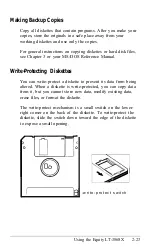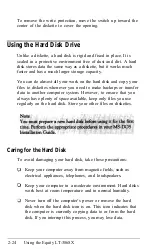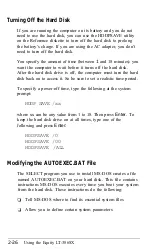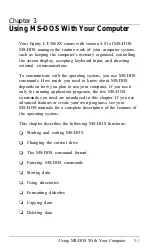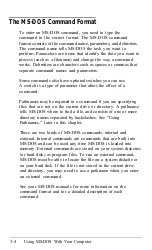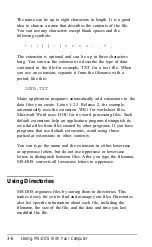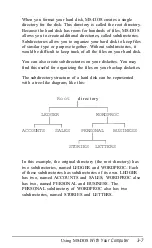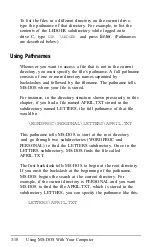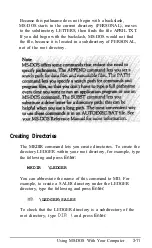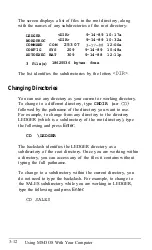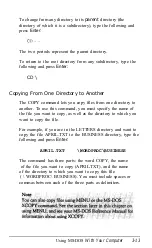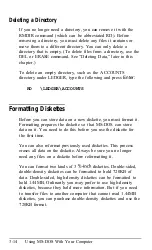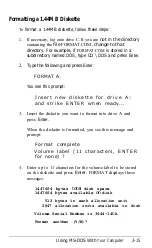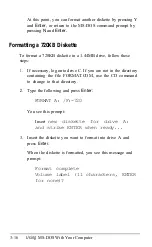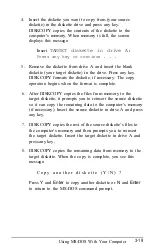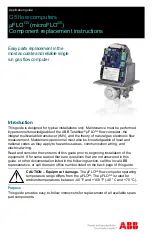
On your own hard disk, you can create a subdirectory structure
that is more complex than this one. Or you may prefer to keep
things simple. Organize your disk to suit your own needs; you
can modify the structure as your needs change.
When creating subdirectories, note the following points:
Any directory can have any number of subdirectories
(except the root directory, which is limited in the number
of files and subdirectories).
You name subdirectories in the same way as files. The name
can include as many as eight characters (letters or
numbers), and you can add an optional extension consisting
of up to three characters.
The root directory does not have a name; it is identified by
a backslash ( \ ).
The Current Directory
MS-DOS always recognizes one directory as the current, or
default, directory, just as it always recognizes one drive as being
the current, or default, drive. The current directory is the
directory in which MS-DOS performs your commands, unless
you tell it otherwise. If you want to run a program or access a
data file that is not stored in the current directory, you can
change directories (making a different directory the current
directory) or include a pathname in your command.
Six basic directory operations are described on the following
pages:
Listing the contents of a directory
Using pathnames
Creating directories
3-8
Using MS-DOS With Your Computer
Summary of Contents for Equity LT-386SX
Page 1: ...EQUITY LT 386SX User s Guide EPSON ...
Page 3: ...EPSON EQUITY LTT M 386SX User s Guide ...
Page 183: ... No codes Ignored D 42 System Diagnostics ...
Page 184: ... No codes Ignored System Diagnostics D 43 ...
Page 189: ... No codes Ignored D 48 System Diagnostics ...
Page 190: ... No codes Ignored System Diagnostics D 49 ...
Page 192: ... No codes Ignored System Diagnostics D 51 ...
Page 193: ... No codes Ignored D 52 System Diagnostics ...
Page 194: ... No codes Ignored System Diagnostics D 53 ...
Page 195: ... No codes Ignored D 54 System Diagnostics ...

